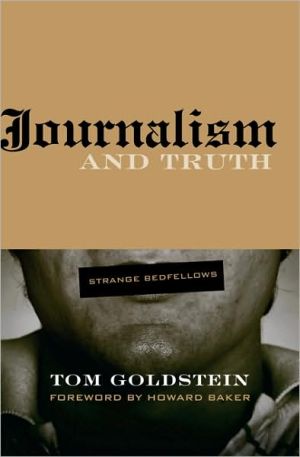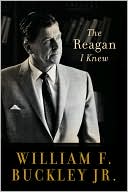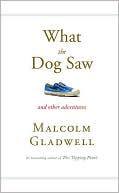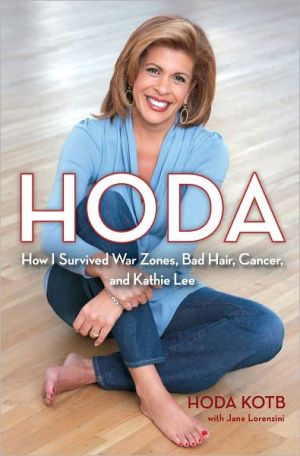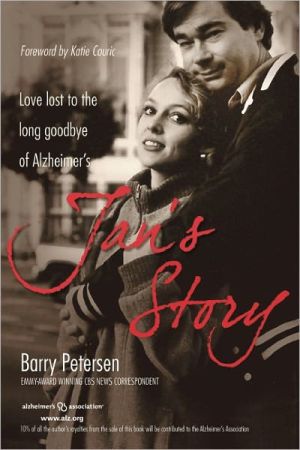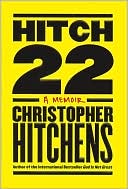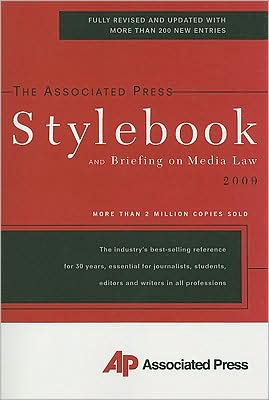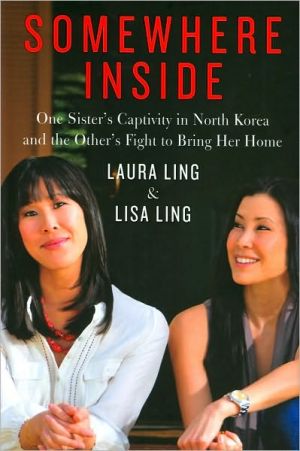Journalism and Truth
The complaint is all too common: I know something about that, and the news got it wrong. Why this should be, and what it says about the relationship between journalism and truth, is exactly the question that is at the core of Tom Goldstein’s very timely book. \ Other disciplines, Goldstein tells us, have clear protocols for gathering evidence and searching for truth. Journalism, however, has some curious...
Search in google:
The complaint is all too common: I know something about that, and the news got it wrong. Why this should be, and what it says about the relationship between journalism and truth, is exactly the question that is at the core of Tom Goldstein’s very timely book. Other disciplines, Goldstein tells us, have clear protocols for gathering evidence and searching for truth. Journalism, however, has some curious conventions that may actually work against such a goal. Looking at how journalism has changed over time—and with it, notions about accuracy and truth in reporting—Goldstein explores how these long-standing and ultimately untrustworthy conventions developed. He also examines why reliable standards of objectivity and accuracy are critical not just to a free press but to the democratic society it informs and serves. From a historical overview to a reconsideration of a misunderstood book about journalism (The Journalist and the Murderer) to a reflection on the coverage of the war in Iraq, his book offers a remarkably wide-ranging and thought-provoking account of how journalism and truth work—or fail to work—together, and why it matters.
JOURNALISM AND TRUTH\ STRANGE BEDFELLOWS \ \ \ By Tom Goldstein \ Northwestern University Press \ Copyright © 2007 \ Tom Goldstein\ All right reserved.\ \ ISBN: 978-0-8101-2433-2 \ \ \ \ \ Chapter One INTRODUCTION \ No breach of faith in the recent history of journalism has measured up in size, scope, and audacity to the sins committed by Jayson Blair of the New York Times until his detection and forced resignation in 2003. There are many close contenders, and it surely should come as no surprise that a few rotten apples populate the barrel of journalists, just as there are at least a few rotten analysts and investors on Wall Street, a few public officials gone wrong, and some wayward doctors and lawyers.\ What concerns me in this book is not only that journalists lie, cheat, and make lots of mistakes. I am interested particularly in how journalists think about the idea of truth and how close they come to attaining it.\ Blair's transgressions-stealing the words of others, putting words into other people's mouths, describing events and scenes as if he were an eyewitness when he was half a continent away-are nothing new in the field of journalism. Although Blair may have been far more audacious than his predecessors, many premier practitioners of the craft have long passed off fiction as fact, preying on a gullible and too-trusting public.\ In the mid-eighteenth century, for instance, Samuel Johnson reported on the activities of the British Parliament for a publication called the Gentlemen's Magazine without ever attending the sessions. In his famous biography of Johnson, James Boswell wrote: "Johnson told me that as soon as he found out that the speeches were thought genuine, he determined that he would write no more of them." Shortly before his death, Johnson expressed regret to Boswell "for his having been the author of fictions, which had passed for realities."\ H. L. Mencken, early in his career, wrote a straight-faced newspaper column celebrating the seventy-fifth anniversary of the bathtub, in which he asserted with plausible historical detail that it had been invented in the 1840s, that Millard Fillmore when he was vice president had been the first to install one in the White House, that the medical profession and public had long regarded it with deep suspicion, and that laws had been passed against the perilous contraption by Virginia, Pennsylvania, and Massachusetts. This column, which appeared on a news page above a short item about a service fraternity planning a "war services board," was, it turned out, made up. Mencken was astonished to find his little joke had been taken at face value. He was still more astonished to find newspapers and magazines copying these "facts" in ever-widening circles, so that they cropped up year after year in the most dignified periodicals.\ This incident is recalled by Allan Nevins, who began his career as a newspaperman and then became a leading historian at Columbia University, where he wrote of the Civil War and of American business history. Part of Nevins's book The Gateway to History was excerpted in The Historian as Detective, a delightful collection assembled by Robin Winks of Yale University, who ruminated on the validity of different types of evidence. "The historian knows just how fallible his daily paper may be (although there are many who seem to feel that they cannot be certain whether it is raining or snowing until the New York Times has told them so)," Winks wrote, "and so he is doubly conscious of the errors of fact, as well as of the distortions of opinion and the misquotations of authority, that lie in wait for the unwary researcher in nineteenth-century sheets, in an age when journalism was yellow, as they say, as well as red, white and blue."\ In 1920, noted journalists Walter Lippmann and Charles Merz published a long essay in the New Republic examining press coverage of the Russian Revolution of 1917. This study showed that American papers gave their readers an account of the revolution that, in Christopher Lasch's words, was "distorted by anti-Bolshevik prejudices, wishful thinking and sheer ignorance."\ The highs and lows of journalism were captured in The Front Page-first the play and then the assorted movies, which became sentimental favorites among journalists of a certain vintage. First staged in 1928, The Front Page includes a raucous scene where journalists invent the news and ignore what happens before their eyes-a comedic situation meant to suggest more than a passing resemblance to Chicago journalism of that era.\ In 1961, Alastair Reid, a well-regarded poet and reporter for the New Yorker, described Spaniards in a small, flyblown bar openly jeering a television speech by Francisco Franco. But the bar had been shut for years, and Reid was using literary license in order to reach, for him at least, a larger truth. Reid's embellishment, when it became known nearly a quarter century later, became front-page news in the Wall Street Journal and the New York Times. The guardians of the press pilloried him for his infraction and wondered what had happened to the vaunted standards of the New Yorker.\ As other sins of journalists became known over time, suggestions for reform were offered by some of the most provocative and well-intentioned thinkers about the press. In The Brass Check, in 1920, Upton Sinclair proposed that a law be enacted forbidding newspapers from publishing interviews without first having received approval from the interviewees. No one paid much attention to this suggestion, or to other proposals, such as establishing municipally owned newspapers, advanced by Sinclair.\ A. J. Liebling, the incomparable critic, told the story of how Albert Camus, once the editor of Combat, a resistance newspaper published in Paris during World War II, had whimsically proposed the creation of a "control" newspaper that would appear one hour after the others with estimates of the percentage of truth in each of their stories, and with pieces interpreting how the stories may have been slanted. This is how Camus explained his idea: "We'd have complete dossiers on the interests, policies and idiosyncrasies of the owners. Then we'd have a dossier on every journalist in the world. The interest, prejudices, and quirks of the owner would equal Z. The prejudices, quirks, and private interests of the journalist, Y. Z times Y would give you X, the probable amount of truth in the story." Camus never got around to testing this scheme. His energies, Liebling deadpanned, were "dissipated" in creative writing.\ In a marvelous essay published in the Yale Review in 1980, John Hersey, equally skilled in fiction and nonfiction, noted that "the minute a writer offers 998 out of 1,000 facts, the worm of bias has begun to wriggle. The vision of each witness is particular. Tolstoy pointed out that immediately after a battle there are as many remembered versions of it as there have been participants." Even so, Hersey continued, the merging of fiction and fact in reporting was not acceptable. The one "sacred" rule of journalism, he said, is: "The writer must not invent. The legend on the license must read: NONE OF THIS WAS MADE UP." The "ethics of journalism," Hersey wrote, "must be based on the simple truth that every journalist knows the difference between the distortion that comes from subtracting observed data and the distortion that comes from adding invented data."\ In 1983, Abe Raskin, the distinguished New York Times writer and editor who spent many of his later years worrying about the press, asked: "Does the proliferation of journalism forms, ranging from straight news reporting through a sometimes bewildering assortment of analytic, entertainment and gossip columns, require notice to the public that varying gradations of credence ought to be applied to the varying types of news treatment?"\ As odious, breathtaking, or frivolous as the transgressions have been, and as inventive, high-minded, or harebrained as the proposed solutions have seemed, it is this type of untruth-the fabrication, the lying-that has long preoccupied journalists. In the fall of 1980, an article by a twenty-six-year-old reporter at the Washington Post named Janet Cooke electrified Washington. She wrote movingly of an eight-year-old heroin addict in a story called "Jimmy's World." The following spring, she was awarded a Pulitzer Prize, and the story immediately unraveled. "Jimmy" turned out be a composite, and the touching quotes attributed to the boy were made up. Cooke confessed, "There is no Jimmy," after she was fired. The Post returned the Pulitzer Prize awarded for the story. Ben Bradlee, the steely and debonair editor of the Post, recalled in his memoir, A Good Life, "The possibility that the story was not true never entered my head." The Post, in the words of its chairman, Katharine Graham, took a "terrible drubbing" for having published the fraudulent article.\ Journalism has not necessarily learned its lesson from "Jimmy's World" and similar debacles. Judging by reported incidents, instances of fraud in American journalism appear to be growing.\ Or perhaps not. Aided by technology, our mechanisms for detecting such frauds may have improved, just in the way we have observed an alarming increase in the incidence of peanut allergies, particularly among the young, in part because we have become more adept at detecting such allergies.\ Still, we are simply not able to quantify whether journalists are getting better, or worse, at behaving well and telling the truth. It is a well-worn and damaging complaint against journalism that subjects of articles know that when articles are written about them or about something they were involved with, they are usually wrong. This observation is an old one. The modern version of the complaint can be traced to John Gordon, the editor of the Sunday Express in Great Britain, who in July 1946 sent a message on accuracy to his sub-editors and reporters, remarking: "I do not wish to be hypercritical, but the plain fact is-and we all know it to be true-that whenever we see a story in a newspaper concerning something we know about, it is more often wrong than right." Gordon's message was repeated in the 1949 report of the Royal Commission on the Press, which had been charged with furthering the free expression of opinion and ensuring the greatest practicable accuracy in the presentation of the news. The Gordon quote also appeared in The Sugar Pill by T. S. Matthews, a former editor of Time magazine who criticized the press for manufacturing "all the big news it can," and it was repeated by the author and teacher Penn Kimball in a 1963 essay entitled "Journalism: Art, Craft or Profession?" In Kimball's view, reporters must learn to master "two opposite psychological states." One is the capacity to become immersed in stories they are sent to cover. The other is to remain detached from "these same intense involvements, to stand outside the experience and place it in perspective for the reader."\ The observation that John Gordon was attempting to make, of course, has been repeated countless times since, although its connection to its British originator is usually lost. The Royal Commission, in its quaint way, discussed with keen understanding the second-hand nature of news, underscoring the tension between truth and journalism and explaining why journalistic truth is necessarily not the entire truth:\ A daily newspaper can seldom be certain of its facts in the sense, for example, in which a nautical almanac is certain of its facts ... news is too ephemeral to acquire the authenticity conferred by investigation and proof. A daily newspaper is obliged by the character of its material to treat as ascertained facts pieces of information of widely differing reliability. Much of its information is obtained by one fallible human being from another, usually by word of mouth. If the informant himself is reliable, he may be misunderstood by a journalist unfamiliar with his technicalities or with points which to the expert are too obvious to mention; if the informant is not certain of his facts, he may mislead the journalist. Even an eyewitness's account may be untrustworthy, particularly if the witness is a member of the public not trained to observe accurately and tells his story in an atmosphere of excitement. Not all news reports come from one person or from people in a position to know the truth, and when the sources are many and indirect the risks of inaccuracy are multiplied.\ The last observation that the Royal Commission made-about the importance of sources and their relationship to journalistic truth-is one that has preoccupied journalists for years, and rarely has there been a satisfactory explanation of what journalists should do when their sources are faulty.\ In a postmortem to "Jimmy's World," the National News Council (which very quietly dissolved itself in 1984) examined what went wrong at the Washington Post. Ben Bradlee, in an interview with members of the council, asserted that "the truth is not something that can be grasped." He went on to say that measuring journalistic truth was an inexact science and that just tightening up on the use of sources was but a limited answer. "When the President is lying, you are lying," he observed. For him, the most interesting revelation in the Pentagon Papers-the chronicle of U.S. involvement in the Vietnam War-was its disclosure that his friend, Secretary of Defense Robert McNamara, had told President Lyndon Johnson in a private White House conference that the military position in Vietnam was deteriorating rapidly-a statement, Bradlee said, that McNamara "made only 20 minutes after painting a rosy picture of the situation for reporters who met him at Andrews Air Force Base."\ If journalists are routinely lied to, was First Amendment lawyer and professor Jane Kirtley correct in defending the press, which had prematurely accused Richard Jewell in 1996 of setting off a bomb in a park in Atlanta near the Olympics? "We cannot be the guarantors of the truth of what government says," Kirtley stated on Crossfire, the now-defunct CNN show where two advocates would take opposite sides of an issue to arouse the audience-and presumably arrive at the truth. "We can only report as accurately as we can what the government says," Kirtley continued, echoing Ben Bradlee's view. "The press is not bound by the rules of evidence, for example, and they're not required to meet the same standards that a prosecutor would have to meet in court before they go with a story, but of course they have to be as accurate as they possibly can."\ In this light, was Judith Miller's apology for her misleading reports in the New York Times on the causes of the Iraq War necessary-or sufficient? "W.M.D.-I got it totally wrong," said Miller. "The analysts, the experts and the journalists who covered them-we were all wrong. If your sources are wrong, you are wrong. I did the best job that I could."\ In other words, should or can we expect journalism to be no more than stenographically accurate? Or is journalism only an aspect of a postmodern sensibility that accepts the impossibility of determining the truth? Shouldn't we expect more? Of course we should.\ * * *\ As a society, we are better equipped than ever to distinguish fact-based truth from the sham, but often we seem no longer to care very much about making the distinction. Contemporary journalism has played a supporting role in the eroding influence of fact-based truth. Journalism, as a central foundation of our culture, needs to do a much better job of achieving literal accuracy and, when appropriate, explaining with greater insight why the quest for literal accuracy cannot always be achieved.\ (Continues...)\ \ \ \ \ Excerpted from JOURNALISM AND TRUTH by Tom Goldstein\ Copyright © 2007 by Tom Goldstein. Excerpted by permission.\ All rights reserved. No part of this excerpt may be reproduced or reprinted without permission in writing from the publisher.\ Excerpts are provided by Dial-A-Book Inc. solely for the personal use of visitors to this web site.\ \
Foreword Howard H. Baker, Jr. ixPreface xiiiIntroduction 1Journalism as Nonrepresentative Truth 25Looking at the Law 47Truth in the Balance 63Eyewitness to History 77Tabloid Truths 95Misadventures in Fact-Checking 121Janet Malcolm's Special Truths 141Looking Forward 161Notes 169Bibliography 187Index 197
